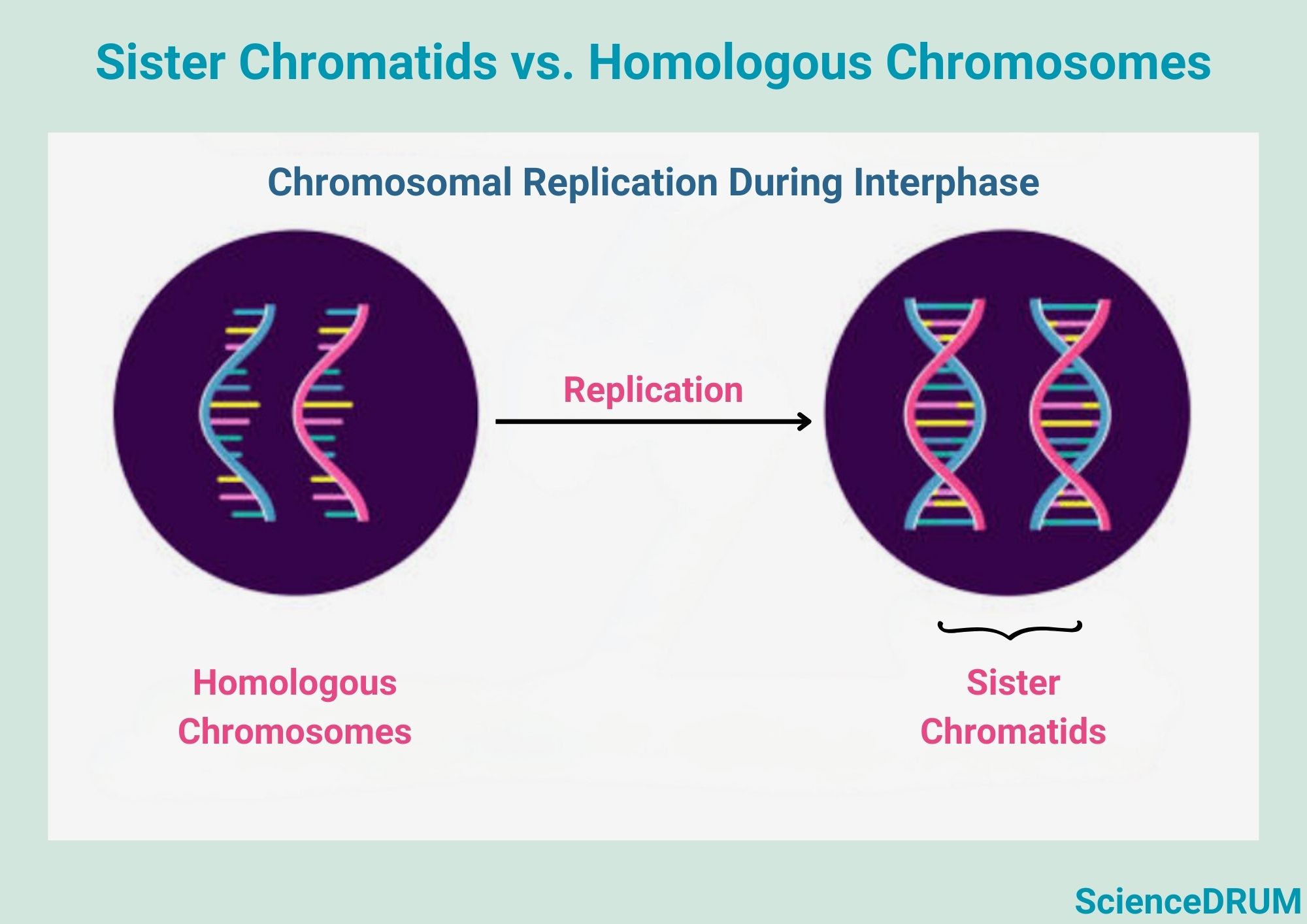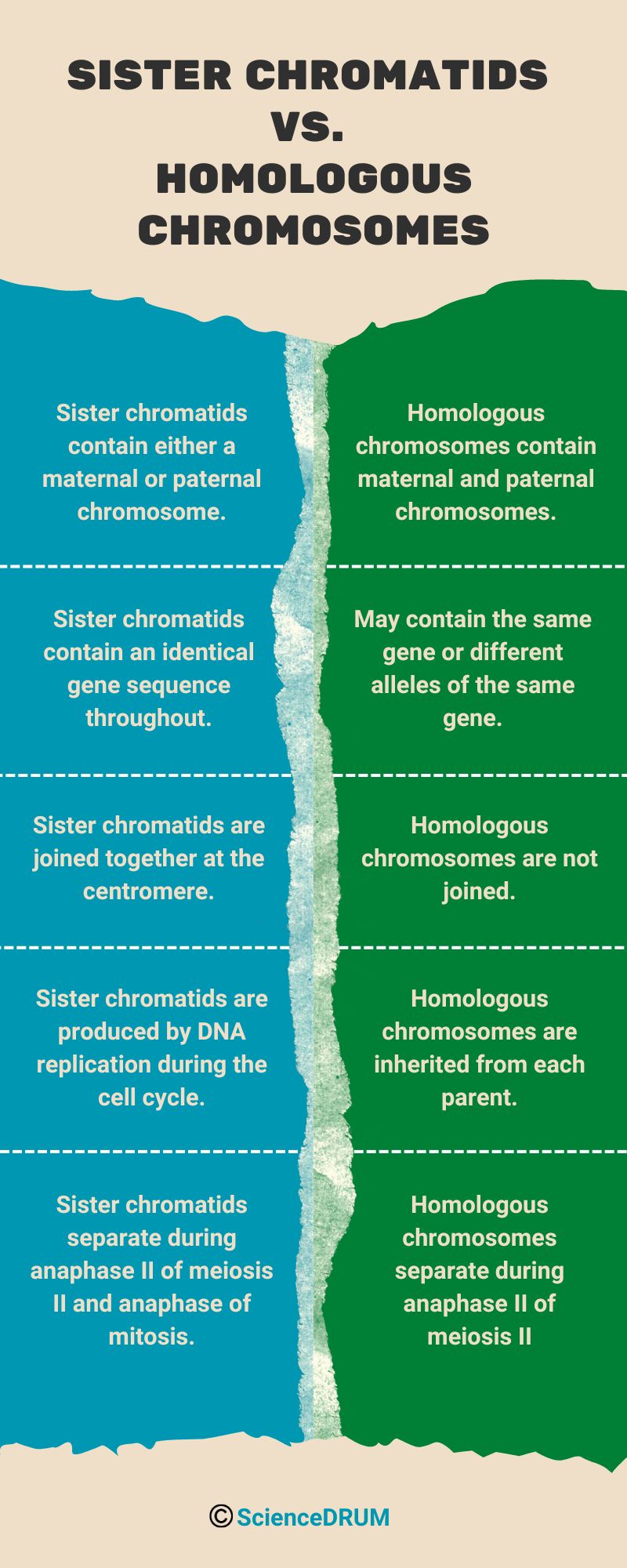
Sister chromatids and homologous chromosomes are different from each other. While sister chromatids are identical copies of a single chromosome, homologous chromosomes are a pair of similar chromosomes that contain the same genes but may have different alleles.
Homologous chromosomes help create genetic diversity by exchanging genetic material during meiosis, while sister chromatids ensure that each daughter cell receives an identical set of chromosomes during mitosis.
When it comes to cell division, understanding the different components involved is essential for grasping the process. Certain structures may sound similar but differ in their structure and functions.
Chromatin and chromosomes are also two structures that might sound similar, but they are actually very different from each other and scientists use them to identify unique structures at specific points in the process of cell division.
In this article, we will dive into the details of what homologous chromosomes and sister chromatids are, what sets them apart, and their specific functions.
What Are Homologous Chromosomes?
Homologous chromosomes are a pair of chromosomes that are similar in size, shape, and genetic content. Humans have 23 pairs of homologous chromosomes, with one chromosome in each pair inherited from each parent.
The homologous chromosomes contain the same genes, but they may have different alleles, or variations of those genes. During meiosis, the process of cell division that produces gametes (sperm or eggs), homologous chromosomes pair up and exchange genetic material.
This is called crossing over, and it helps create genetic diversity in offspring.
What Are Sister Chromatids?
Sister chromatids are two identical copies of a single chromosome formed by DNA replication during the S phase of the cell cycle. Each chromosome contains a single, linear DNA molecule that is wrapped around histone proteins to form a structure called chromatin.
When a chromosome replicates, it produces two identical sister chromatids that are held together at a region called the centromere. Sister chromatids play a crucial role in cell division.
During mitosis, the process of cell division that produces two identical daughter cells, sister chromatids are separated and pulled to opposite poles of the cell by the spindle fibers. This results in each daughter cell receiving an identical set of chromosomes.
How Are Sister Chromatids and Homologous Chromosomes Different From Each Other?
Although these terms may sound similar, sister chromatids and homologous chromosomes differ in several ways — namely how they originate, their genetic content, and their functions.
- Genetic content. Homologous chromosomes contain the same genes, but they may have different alleles. Sister chromatids are identical copies of the same chromosome.
- Pairing. Homologous chromosomes pair up during meiosis and undergo crossing over. Sister chromatids are held together at the centromere and separate during mitosis.
- Inheritance. Homologous chromosomes are inherited from each parent. Sister chromatids are produced by DNA replication during the cell cycle.
- Function. Homologous chromosomes help create genetic diversity by exchanging genetic material during meiosis. Sister chromatids ensure that each daughter cell receives an identical set of chromosomes during mitosis.
Sister Chromatids vs. Homologous Chromosomes
| Sister Chromatids | Homologous Chromosomes | |
| Definition | Two identical copies of the same chromosome are called sister chromatids. | Homologous chromosomes are a pair of chromosomes — one from the father and one from the mother — paired up during fertilization in a diploid cell. |
| Source | Chromatids originate either from the father’s or mother’s gametes (called sperm cells and egg cells respectively). | Homologous chromosomes are formed out of the combination of one chromosome from the father and one from the mother. |
| Composition | Each sister chromatid contains a double helix of DNA. Sister chromatids are linked by a centromere. | Homologous chromosomes contain a DNA-protein complex called chromatin organized into subunits called nucleosomes. |

Homologous chromosomes are pairs of similar chromosomes that contain the same genes but may have different alleles. They pair up during meiosis and undergo crossing over, which helps create genetic diversity.
Sister chromatids, on the other hand, are identical copies of the same chromosome held together at the centromere. They ensure that each daughter cell receives an identical set of chromosomes during mitosis.
- Chromosomes contain the entire genetic material of the particular organism.
- Replication of chromosomes occurs during processes like mitosis and meiosis, leading to the formation of chromatids.
- The term “chromatid” refers to a chromosome that has undergone replication.
- The term “sister chromatids” refers to genetically identical chromatid pairs.
- Human beings inherit one chromosome from the mother and one from the father. This pair is called the homologous chromosome.
- While sister chromatids are completely identical, homologous chromosomes can contain different alleles of the same gene. {1}
Frequently Asked Questions
Sources:
- University of Utah: “Mitosis, Meiosis, and Fertilization.”